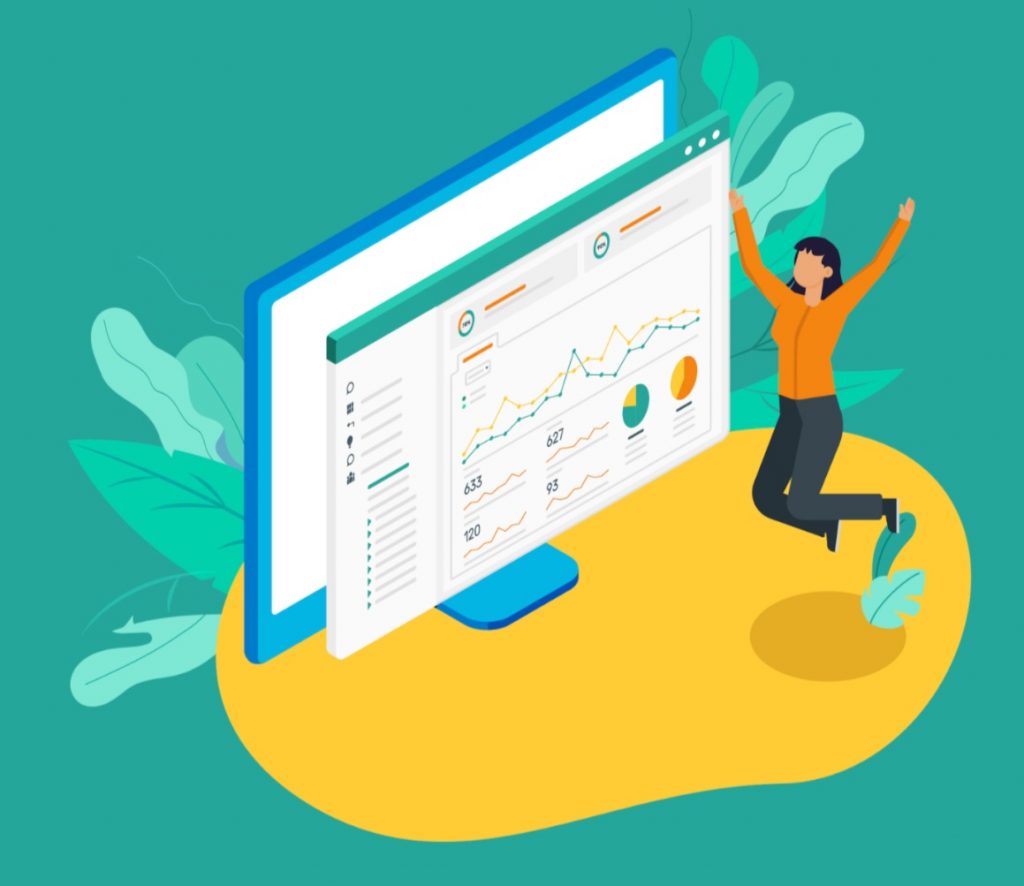You Don’t Have to Be Scared of People Analytics: A Data Scientist Breaks It Down

This article was originally written by Abdel-Rahmen Korichi, Head of Data Science at Panalyt
Whether you are an HR specialist, a company manager, have just started a new venture, or you perhaps just want to know your employee population better, you may have heard of this term: People Analytics.
It is not an overstatement to say that data and people analytics are transforming the workplace. HR professionals are quickly picking up the trend — Deloitte, for example, has recognised the significance of developing a “long-range plan to ‘datafy’ HR”.
The ability to manage and fine-tune the workplace with accurate data and actionable analytics is certainly an attractive prospect.

It can be intimidating, however, for those in the management who want to be more involved in understanding their workforce, yet do not have the expertise to delve into this scary realm of ‘analytics’. At the end of the day, data-driven HR analytics is a new trend, and it takes time to learn and get used to it.
As a data scientist, I have learnt a few things that can help you (if you are one of those mentioned above). Below are the 7 steps and a few tips that can guide you to a successful people analytics project.
Step 1: Identify a question you want to answer
In essence, it is extremely crucial for you to know why you are undertaking an analytics project. In other words, “What is the problem?”, “What is the business reason?”, or “What do we need to do to control the problem?”.
This step needs to come first and needs to be done with utmost care. My sound advice is to dissect your business plan and make sure you fully comprehend your company’s plan and objective. Talk to members of your executive team to understand the overall objective.
Get the first step right — honestly, you wouldn’t want to invest hours of works if there isn’t a clear business problem.
Step 2: Frame your hypothesis
It helps to clarify a hypothesis to test “beliefs” or “opinions” about the reasons behind a business problem. Formulating a strong and clear hypothesis will ease your way through the subsequent steps, especially when you reach the data collection phase.
Your hypothesis could be: ‘Variations in salary evolution among different gender groups have a direct impact on turnover rate’. (Example 1)
A word of wisdom: You need to be as detailed as possible — identify the metrics, establish a connection/association between them, and the link back to the main business problem. An ideal hypothesis can guard against deriving conclusions from incidental observations/speculations and focus on genuine root causes instead.
Step 3: Collect your Data
Notice that this is step 3, and not step 1.
Again, the emphasis of a successful project needs to be identifying a clear business problem. Don’t be like this hilarious case:
“After a recent speech, an attendee came up to me and said, ‘I can predict attrition for my firm to 92 percent accuracy.’ I said, ‘Wow! That’s great. Is attrition a problem for your firm?’ And she said, ‘No, not really.’ ”— Josh Bersin

Some people analytics project fail and others succeed. What makes the difference? One of the most important factors is the quality of the data.
This part is always very important to get the most out of your data and requires the most time and effort because the results and the output of any study (from simple analysis to a complicated machine learning problem) are only as good as the quality of your raw data. For that, you want to pay attention to extreme or missing values and replace them if needed.
You also want to make sure that your dataset is standardized: you don’t want to have different values for the same office or different date format for hiring data and birthdate.
Step 4: Define your metrics
Metrics capture the essence of your project’s goal. You should be as detailed and specific as possible. Given the example (1) above, we can scope out the metrics as:
Primary Metric: Turnover/ attrition rate
Secondary Metric: Gender, Variations in salary evolution
Apart from primary and secondary metrics, I learned that it is primordial to distinguish between two other categories of metrics: actionable metrics, and non-actionable metrics.
Actionable metrics are the metrics you can influence to a certain extent by changing your management, like the salary, current manager, current role, etc.
Non-actionable metrics are those that you cannot influence, like gender, age, location, etc.
Businesses are obviously much more interested in actionable metrics because they tell the story of what action needs to be taken to meet their goals. However, non-actionable metrics are still useful in the sense that companies can know what is the profile of employees that are likely to leave. And even if they cannot do anything to make them stay, they can anticipate their leave.
My advice: if a company is big enough, non-actionable metrics can be used to segment the employees, for example by location, and create different machine learning models for each segment.
Step 5: Conduct deep analysis and derive pertinent insights
It is time to dissect your data. This is where methodologies and statistics come into place to test your hypothesis and derive intelligent insights from your raw data. With your clearly defined metrics, continue segmenting and investigating your population, paying close attention to anomalies (outliers in your data, or simply things that stand out).
My suggestion is that you should contextualise your analysis. The digger you deep into your storyline, the better you can balance your facts with context, and hence reach conclusions that have as much impact and relevance as possible.
Step 6: Drive decisions, and change plans
Any People Analytics project is initiated with a desire for a better change in mind. Data and analytics shouldn’t just sit in excel sheets — they should be mined and created for an impactful change.
However, to drive decisions and change plan, you would need to deliver your findings to the rest of the company — from the management to the executives. That means a lot of effort into explaining esoteric data/analytics and persuading them.
I propose that you do a Case for Change, or a Pitch Desk, or a Business Plan, including:
· Executive Summary
· Context
· Current issues
· Proposed Solution(s) and Targeted Outcomes
· Costs & Benefits (ROI)
· Project/Implementation Approach
· Resources Required
· Recommendations and advice for the future.
Step 7: Implement and evaluate.
This is the last lap of your project, yet one of the most important. You need to ensure that decisions and implementations are based on your project and that your project has returned value to the organisation. Once you have realised the value, learn from it and build on it.
The only way is up, and you need to keep the momentum up with your next project.
So with those 7 steps mentioned above, you can finally nail your People Analytics project. Easy, yes?
Ok… if that is still too intimidating, you can always opt for platforms that do all the work for you.
Recognising the intimidation of People Analytics to those who don’t have the expertise, my team and I decided to build Panalyt — an easy-to-use engine that integrates data from any source and puts the resulting analytics dashboards directly into the hands of managers, even those who are yet to be familiar with data-driven analytics.

No longer will you need to go through the entire tedious process of conducting an analytics project, when you have the help of a powerful platform like ours. With just a few toggles and clicks, drags and drops, you can retrieve highly accurate HR data analytics — attrition, gender ratio, key performers, recruitment insights, benchmarks, etc., compare your data with custom KPIs or real-time market standards and obtain trend forecasts that put you at the forefront of the talent market.
With Panalyt, you can now easily nail your People Analytics Project — all with one step, like a true pro!

About Panalyt
Panalyt bridges the People-Data Gap, enabling real-time, uniform access to relevant people data, reports, and insights for CxOs, HR, and business managers.
People data, including employee interactions and connections, is combined with business data empowering businesses to leapfrog to data-driven decision making, eliminating bias and improving engagement, sales effectiveness, productivity, and, as a result, business performance.
Interested in a further discussion on how People Analytics and Relational Analytics can help you drive an improved employee and business outcomes? Book a 30-minute discovery call with our Panalyt co-founders to learn more!







